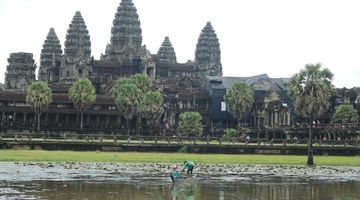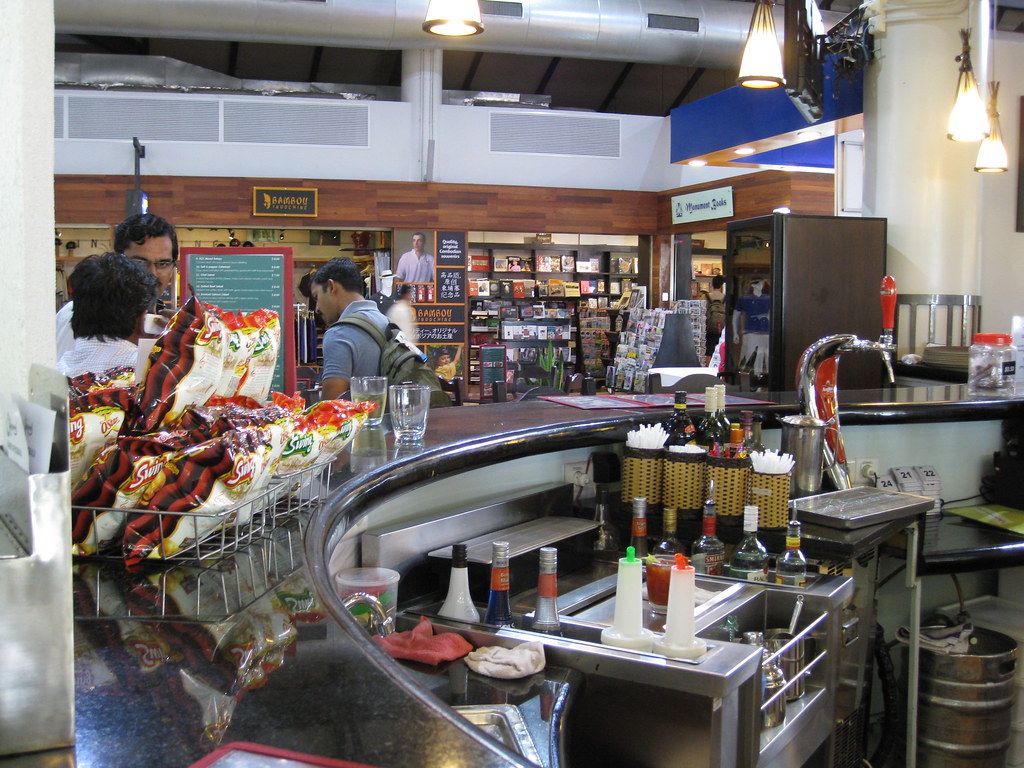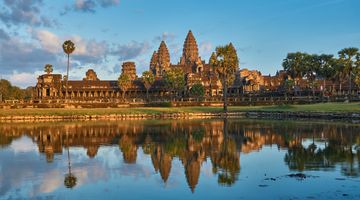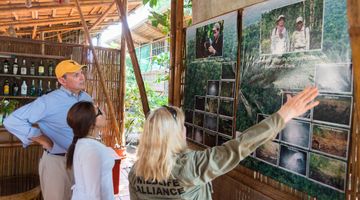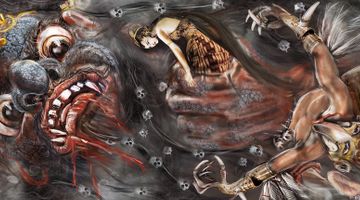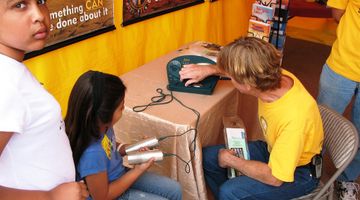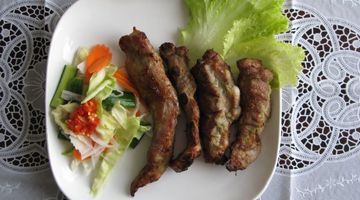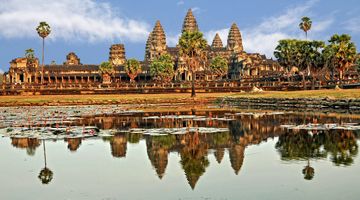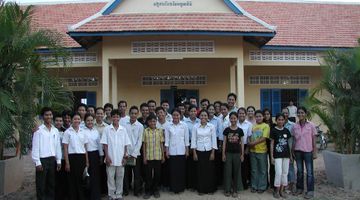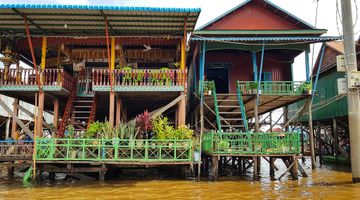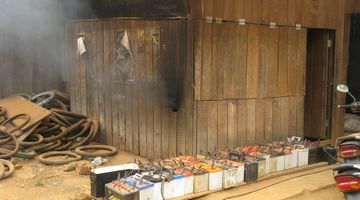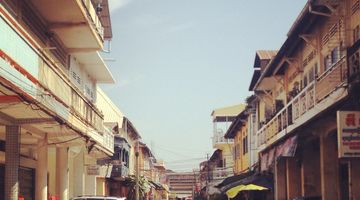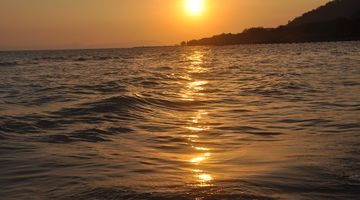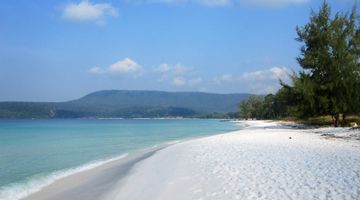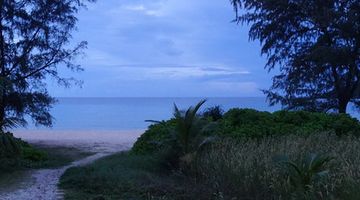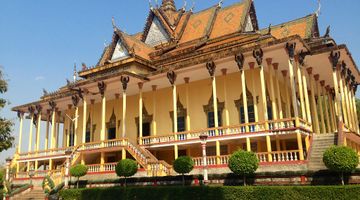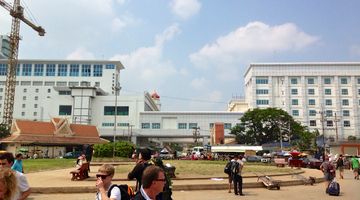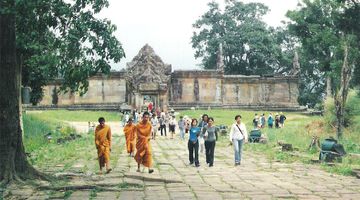Siem Reap Cambodia - the Ultimate Travel Guide
About
Siem Reap directly translates to "Siamese Defeated", a name which can give you insight into its rocky past. In the 1500's Siem Reap was invaded by the Siam army where Thailand ultimately controlled Siem Reap for 200 years. It was then recolonized by the French in the 19th century providing for a culinary and architectural fusion of French and Cambodian styles.
The gateway to the Angkor temples, this is a booming city flush with café culture and a nightlife suitable to both backpackers and luxury travellers alike. Despite its harsh history, you'd never get the impression of negativity when you walk around and explore.
Siem Reap is a very walkable city with a constant flow of tourism. You will find multiple connections to see the temples, markets for both night and daytime and posh resorts with hammocks and pools.
Why go
Although Angkor Wat seems to be the prime reason for visiting Siem Reap there are many other activities worth checking out. If you're into shopping, the Psar Chaa Market, also known as 'The Old Market', is jam-packed with clothing, handicrafts, produce, herbs and spices.
If you're a history buff, the Siem Reap War Museum is great for advancing your knowledge in the Khmer Rouge as well as ancient Buddhist anthropological artefacts.
If you simply just want to kick back, have a nice cold beer and socialize with other travellers from all walks of life, Siem Reap is the perfect place for that.
When go
The weather in Siem Reap is generally quite muggy and hot from March to May. This is usually brings the hottest temperatures of the year soaring up into the mid 40's and with that comes the risk of dehydration. If you are spending the day out at the temples or simply strolling around the city, please drink plenty of water and be sure to wear sunscreen.
June to November is the rainy season. This is a much cooler time of the year to visit and due to the frequent storms can actually be quite nice as the large number of tourists that usually encompass SIem Reap declines significantly. However be prepared for rain and lots of it. If you can handle the moisture this is the best time to see the usually crowded temples at a much more peaceful level. Lightning storms do accompany the rainy season however and they can be quite dangerous, resulting in many deaths over the last few years.
Accommodation
Accommodation in Siem Reap provides options that are all across the board and whatever you're seeking in your travel style, you will surely find. Within a short distance from one another you'll be able to shop around for what suits you.
Within minutes you can find a USD3-USD5 a night dorm at the party packed Mad Monkey Hostel or a USD300 a night stay in paradise at the Frangipani infused Sofitel Resort. During our stay in Siem Reap we enjoyed simple fan-cooled USD6 rooms in Popular Guesthouse both for its welcoming hosts and winning location steps from the Old market, and a breezy terrace for breakfasts, dinners and just a cold beer during the day was also a big plus.
Generally it is not necessary to pre-book accommodation as the market is quite saturated and just a short tuk-tuk drive full of options, though if you're with a large group of people or maybe more picky with where you stay, we would do some research beforehand.
If you aren't sure where to look, Sivatha Avenue is the go-to street, as it is filled with over 15 hostels and will also be the best place for bars and cafes.
Food
Food is huge in Siem Reap. Whether you want street cart food for a dollar, dine in western options or traditional Khmer platters, you will not run out of places to choose from.
Much like Phnom Penh, Siem Reap also has a FCC (Foreign Corresponding Café) with high quality food and cocktails with a wonderful ambience overlooking the Siem Reap River.
If you're looking for something a little more budget friendly, Sivatha Avenue is the centre for both street food and cafes. Café Indochine is a popular eatery where you can find the best amok in the city (Cambodia's signature dish).
We also highly recommend having a USD1 smoothie from any of the multiple and highly competitive street vendors. Where else can you have a fresh fruit smoothie made fresh for such a great price? If you've had a big night out, this can be the most excellent hangover cure.
Miss Wong's, located just by the Night Market tucked away in The Lane is a must-visit. The red walls and well-lit ambience make this Kiwi Owned bar the best place in Siem Reap for a nice Martini (though prepare yourself as they are quite strong) and plump delicious Dim Sums.
Getting around
Siem Reap is small enough that the entire city centre is travelable via foot, but many hostels provide bicycles for an incredibly affordable rate – though be prepared to show them your passport as collateral. This is a great way to get some exercise and see the city simultaneously.
Opposite to many other places in Cambodia, motorbikes are not rented out to foreigners, though you can occasionally persuade some locals to do it but be ready for possible police encounters!
On hotter days it is best to just hire a tuk-tuk and give back to the local economy. They are rentable by the hour and seemingly always looking for ride opportunities.
Getting in and out
If you’re traveling onwards to other countries or other parts of Cambodia, tickets are available for advanced booking online here.
There is one major bus station, which is heavily used for the main point of travel both internationally and within Cambodia. It has recently moved locations and is 4 km east of the city centre on Route 6, though any local will know exactly where it is if you ask. There will also be a full pack of tuk-tuk drivers waiting to take you into the city.
Safety
Siem Reap, much like most of Cambodia, is a Buddhist city. Traveling here is very safe but please keep in mind that petty thefts do occur occasionally and we cannot stress enough the importance of agreeing on price before taking a ride in a taxi cab or tuk-tuk as prices can suddenly increase to an unfair level.
